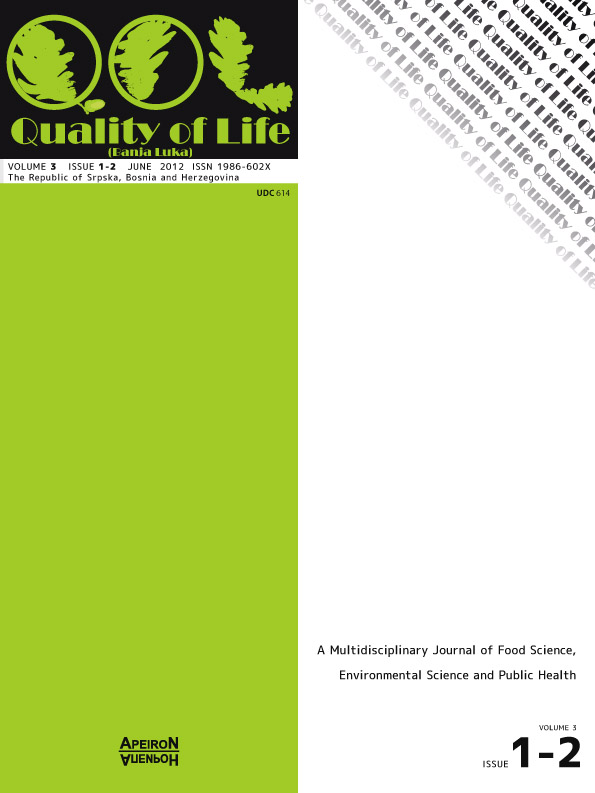Classification of Honeys From Three Geographical Regions Based on Their Quality Control Data
DOI:
https://doi.org/10.7251/QOL1201013GAbstract
Characterisation of commercial honeys is a hard task initiated in response to consumers’ demands. They demand basic quality level and determination of geographical and botanical origin. During processing and bottling of honey, there is a possibility of mixing honeys from various origins and quality. The processing could cause honey alterations that can affect the properties and quality, due to the adulteration of high quality honey types with a lower price natural honey. Control of honey requires determination of parameters that could unequivocally establish origin and improve honey characterisation. Nineteen physicochemical parameters (water content, ash, content of Zn, Cd, P, Fe, Cu, Mn, Mg, K, Na, refraction index, density, electrical conductivity, pH, free-acidity, percentage of total sugars, fructose and glucose, and sucrose) were analyzed in 194 samples of 7 nectar honey types (Amorpha, Black Locust, Black Locust and Multifloral, Chestnut, Chestnut and Multifloral, Bast-small-leaved lime and White Linden, Multifloral) from three geographical regions of the North-West Bosnia and Herzegovina. The aim of the study was to find which physicochemical parameters correlated to the geographical origin of the honey. After applying the one-way analysis of variance - ANOVA statistical comparison of analytically measured physicochemical parameters for a given honey types and Turkey’s Multiple Comparison HSD Test, the results showed that the content of ash, Cd, Mn, Mg, K, pH and electrical conductivity was useful for discriminating honeys from three geographical regions of the North-West Bosnia and Herzegovina.Downloads
Published
2012-06-15
Issue
Section
Чланци
